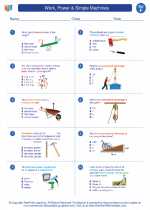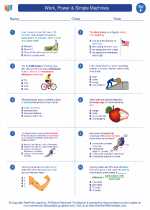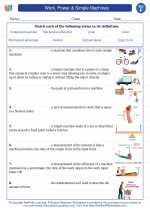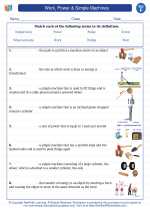Earthquakes
An earthquake is the shaking of the surface of the Earth resulting from a sudden release of energy in the Earth's lithosphere that creates seismic waves.
Causes of Earthquakes
Earthquakes are caused by the sudden release of energy within the Earth's crust or upper mantle. This release of energy causes seismic waves that shake the Earth's surface.
Types of Faults
Earthquakes occur along faults, which are fractures in the Earth's crust where movement has occurred. There are three main types of faults:
- Normal Fault: This occurs when the hanging wall drops down relative to the footwall due to tensional forces.
- Reverse Fault: This occurs when the hanging wall moves up relative to the footwall due to compressional forces.
- Strike-Slip Fault: This occurs when the rocks on either side of the fault move horizontally in opposite directions due to shear forces.
Seismic Waves
When an earthquake occurs, it generates seismic waves that travel through the Earth and along its surface. There are two main types of seismic waves:
- P Waves (Primary Waves): These are the fastest seismic waves and can travel through solids, liquids, and gases. They cause rock particles to vibrate in the same direction as the wave is traveling.
- S Waves (Secondary Waves): These waves are slower than P waves and can only travel through solids. They cause rock particles to move at right angles to the direction of the wave.
Measuring Earthquakes
Earthquakes are measured using instruments called seismometers. The most common scale for measuring the size of an earthquake is the Richter scale, which measures the amplitude of seismic waves. Another scale, the moment magnitude scale, takes into account the amount of slip on the fault, the area of the fault surface that slipped, and the rigidity of the rocks that slipped.
Effects of Earthquakes
Earthquakes can have devastating effects, including ground shaking, surface rupture, landslides, tsunamis, and human impacts such as building and infrastructure damage, injuries, and loss of life.
Earthquake Preparedness
It's important to be prepared for earthquakes. This includes creating an emergency plan, securing heavy items that could fall and cause injury, and knowing how to "Drop, Cover, and Hold On" during an earthquake.
[Earthquakes] Related Worksheets and Study Guides:
.◂Science Worksheets and Study Guides Sixth Grade. Work, Power & Simple Machines

 Worksheet/Answer key
Worksheet/Answer key
 Worksheet/Answer key
Worksheet/Answer key
 Vocabulary/Answer key
Vocabulary/Answer key
 Vocabulary/Answer key
Vocabulary/Answer key
